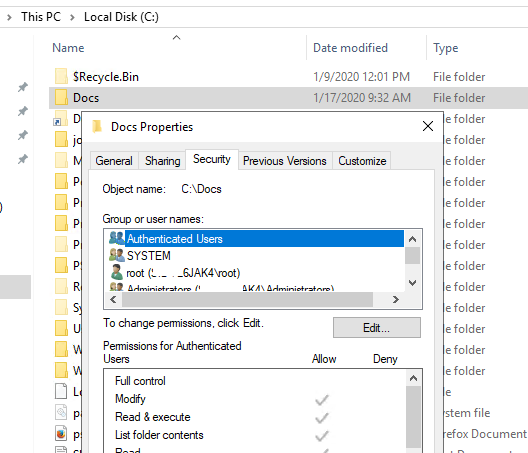

Icacls returns the ACL assigned to the object in this case, the Folder folder includes all of the ACEs inside. # Checking permissions of the folder named Folder1 To demonstrate, create a folder and then run icacls to view its permissions, as shown below.

If so, a basic icacls command syntax command would suffice. Perhaps you want to see the existing permissions on a file or folder. Open File Explorer, right-click on a file or folder, and choose Properties from the context menu. To see a file or folder’s advanced permissions:ġ. These permissions include allowing or denying specific rights, along with basic read/write permissions. The icacls command can set many granular permissions in file or folder properties in the advanced security settings page. Related: How To Manage NTFS Permissions With PowerShell NTFS permissions are in place to protect systems from unauthorized access. ACEs contain permissions and details about how child objects inherit these permissions. In this context, an ACL contains a list of a user or a group’s permissions on an object within the NTFS file system.Įach entry in an ACL is called an Access Control Entry (ACE). The icacls command is a command line utility executed to view or modify a file or folder permissions on the Windows file system.īut before you get into changing file and folder permissions with the icacls command, you must first understand Access Control Lists (ACL). There are times that a user cannot access or modify a file or folder, and one of the reasons would be a lack of user permissions on the object. Learning What icacls Command is and How it Works



 0 kommentar(er)
0 kommentar(er)
